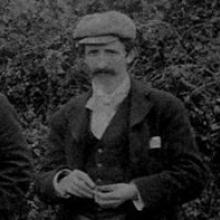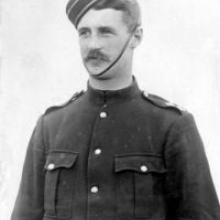When Toitu, the Otago Settlers Museum, reopens in December, it will have a permanent military exhibition displaying items from the South's military heritage dating back to the 1860s, reports military historian Don Mackay.

On a cold Saturday afternoon on May 31, 1902, near the banks of the Vaal River, a reluctant peace was reached between the Boer generals of the Transvaal and Orange Free State republics and their British adversaries inside a large marquee at the town of Vereeniging. That was the end of a bitter war that cost the lives of tens of thousands of soldiers and civilians, including 230 New Zealanders.
Back in New Zealand, inflated pride was the order of the day as the colony gushed about its troopers' performance on the veldt, boosted in no small part from the fount of exaggerating newspaper editors and the boastful accounts of the men themselves. Celebrations and parades of all sorts took place across Otago and Southland before each settlement focused on ways to record its contribution.
In Dunedin, artist Robert Hawcridge was given the task of illustrating the battles in which Otago men were prominent, and the committee responsible for erecting Dunedin's war memorial at the Oval in 1906 reproduced these drawings on a special memorial print entitled Otago's Fallen Soldiers during the Boer War, 1899-1902 for distribution to every public school throughout Otago.
Four of "Bob" Hawcridge's works straddled corners of a St George Cross listing those who died to remind the province's youth of what was sacrificed, and perhaps that they too might one day be called upon to protect the "one flag" of the British Empire.
The Otago Settlers Museum retains three of these works by Hawcridge.
Typical of the war art of the period, Hawcridge's work was somewhat imaginative, often employing considerable licence to both "accentuate" and "concentrate" the valour of his subjects. His art nonetheless signposted the main battles in which Otago soldiers took part, and these stirring images were lapped up by a public hungry for any military heritage it could call its own.
Easily the most rousing of Hawcridge's illustrations is his drawing of New Zealand's first overseas blooding at the remote military camp at Slingersfontein in northern Cape Colony in January 1900.
The battle was a close-run affair as the attacking Boers nearly overran the beleaguered British force defending the crestline. But the day was ultimately saved by a small troop from New Zealand's First Contingent who, realising the severity of the situation, fixed bayonets and charged down the hill for all they were worth at the Boers, who took flight. Sergeant Sam Gourley - the son of Hugh Gourley, a Dunedin undertaker and former mayor - was shot several times before receiving an ultimately fatal concussion as he plummeted headfirst into a boulder.
After refusing a tot of whisky to dull his pain, Gourley was stretchered down the slope by his fellow troopers to the camp below. The contingent's surgeon Dr Thomas Burns, the grandson of Otago founder Thomas Burns, did what little he could to comfort the dying man. Gourley has the unfortunate distinction of being the first Otago soldier to die in battle during the 20th century.
The dramatic charge at Slingersfontein generated immense pride in the young colony and the battle-site was thereafter known as "New Zealand Hill".
The next illustration (bottom right) depicts the First Contingent's scrap at Koornspruit, the site of an embarrassing reversal of arms when Boer commandos captured large numbers of men and materiel in March 1900. The Boers sprang a trap upon a British column retreating to Bloemfontein, a force that had the services of the New Zealanders as a rearguard.
Panicked by Boer shellfire, the column hastily took flight without scouting the exit across a drift in the nearby river. The Boers held up at gunpoint and captured each wagon as they entered the drift, then unleashed a torrent of artillery and rifle fire from the surrounding hills on the remaining British force, described by one survivor as a "hellish vortex".
Two Royal Horse Artillery batteries were caught up in the trap, but one, Q Battery, managed to extricate itself and with their guns and limbers set off in mad career back across the undulating landscape until forced to stand and fight. Several mounted units, including the New Zealanders commanded by Major Alfred Robin, of Dunedin, came to their rescue to cover the withdrawal of the battery, Major Robin's men being the last to cross the river still returning Boer fire. But 17 New Zealanders, racked with enteric fever (typhoid), were captured in their wagon by the Boers after traversing the drift.
A typically British response followed in the wake of this disastrous rout in which more than 570 men were killed, wounded or captured, with four Victoria Crosses being awarded to members of the by then famous Q Battery.

The southern companies of the Fourth Contingent were led by former pupils of Otago Boys' High School; Harry Fulton captained the Otago unit, and Balclutha bank manager Jack (John) Harvey, the commander of the newly formed Clutha Mounted Rifles, led the Southland-dominated company.
Arriving at Beira, the Fourth Contingent gradually made their way through Rhodesia then south to Mafeking where they took part in their first action at Ottoshoop in August 1900. The Boers were defending several rocky kopjes (small hills) northeast of the township, and the contingent, ordered to chase them off, galloped to the battlefield then dismounted and made their way towards the summit under fire.
Perhaps trying to emulate the heroics at New Zealand Hill, a bayonet charge was ordered that was, given the circumstances confronting them, foolhardy to say the least.
Fearlessly, Harvey left the shelter of large boulders beneath the summit and led his company up the hill only to be shot dead moments later when he turned to give an order. Hawcridge's illustration (top left) depicts Jack Harvey's last order, reputed to be: "Now, we will do or die, boys!"
Hawcridge's last illustration (bottom left) records the plucky initiative by Dunedin soldier Sergeant Charles Minifie at Langverwacht in Orange Free State in February 1902, a deadly battle that cost the lives of 23 New Zealanders. These men were part of the Seventh Contingent deployed in massive lines of mounted men whose job it was to drive the Boers towards defended lines of blockhouses in order to crush them like a giant steamroller. But these ruthless tactics were seriously flawed as the elusive Boer commandos could break through British lines by concentrating superior force at one point.
Camped along the length of a low ridge overlooking a stream, the Seventh Contingent dug piquets (small defensive outposts) and settled in for the night, only to be woken at midnight by the sound of the Boers frantically whipping a large herd of cattle towards them. Pandemonium ensued in the darkness as several hundred Boers swept up the ridge and overwhelmed one outpost after another.
During the mayhem, the New Zealanders realised the Boers had seized a rapid-firing Maxim gun and killed its English crew, so Sgt Minifie led a party and stormed the redoubt then successfully beat off another Boer attack with the gun until it jammed. Ignoring heavy enemy fire, Sgt Minifie and another trooper rolled the gun backwards and pushed it over a small cliff and into swampy ground below. In saving the gun from capture, they too were immortalised by Hawcridge. Langverwacht - also known as Bothasberg - was the single largest loss of New Zealand life in war until Gallipoli.
Bob Hawcridge died in 1920 but his war art remains a rare example of Otago soldiers engaged in battle.
Nothing of note specific to the province's men fighting overseas was produced in either pencil or paint for the remainder of last century. Official New Zealand Army artist Captain Matt Gauldie finally broke this drought in 2010 when he completed a large oil painting depicting the Otago Mounted Rifles' attack on their horses across no-man's land in 1917 at Messines on the Western Front - commissioned to mark 150 years of military endeavour in the South.
- Historian Don Mackay has written and published books on a range of military topics, including The Troopers' Tale: The History of the Otago Mounted Rifles.












